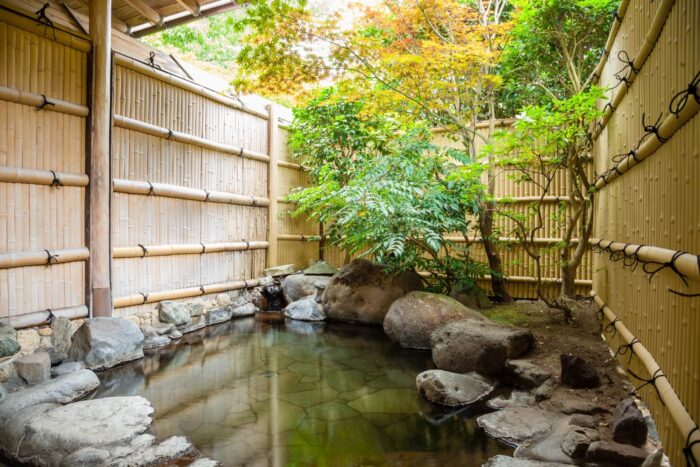
Last Updated: 17 Jul 2020 Why don’t Japanese share more information?
Americans who work with Japanese often express the concern that their Japanese colleagues do not share enough information with them. In some cases, the Americans start to wonder whether their Japanese colleagues aren’t actively being secretive. This can create an atmosphere of distrust and exclusion.
What is behind these common concerns? In the vast majority of cases, Japanese staff are not actively plotting to keep American employees in the dark. Rather, this impression tends to be created as a combination of two important factors: the language barrier and differences in communication style.
Due to their struggles using the English language, Japanese often get exhausted trying to express themselves, and give up before they have communicated all the necessary information. Japanese frequently confide to me how exhausting it is to try to convey all the details they want in English, so they often abbreviate things to make it easier on themselves.
Another important factor is that the way in which Americans converse with Japanese can actually prevent them from giving complete information. In other words, Americans sometimes make Japanese feel frustrated when they are trying to say everything they want to say. How does this happen? When the Americans in a meeting are talking non-stop at a fast pace with no room to get a word in edgewise, Japanese tend to give up trying to express themselves, resulting in less information being communicated. Or, asking a Japanese person a question but not waiting for them to answer, or finishing the sentences of someone who is talking slowly. These American habits also make Japanese want to retreat from a conversation. It’s important to slow down and have more patience when speaking with Japanese, and be willing to have some silent spots, as those will make Japanese feel more comfortable speaking up and sharing their thoughts. You will be viewed as someone “easy to talk to” and will be rewarded by getting more information from Japanese colleagues.
Written communication is also a challenge. Many Japanese stationed in the U.S. complain that their colleagues in Japan expect them to constantly serve as translators. Key information is communicated by phone in Japanese, or in Japanese documents. It’s practically impossible to for someone to translate all these communications into English and also keep on top of their other job duties. (This is particularly true when you consider the fact that most Japanese who are sent to work outside of Japan are not trained linguists.) As a result, some information may go untranslated and thus not conveyed to American employees. Hiring specialized translation staff to relieve Japanese expatriates of some of this burden can be helpful in enhancing the flow of information. Creating a log of incoming documents (who they are from and a brief summary in English of their contents) can also help Americans keep informed about what is going on. Some Japanese companies have created policies that require the parent company to use English in its written communications to the U.S. operation, and for contacts to go directly to the American person who is working on a matter rather than the Japanese expatriate.
Another key factor creating the impression of secrecy is the “hear one, understand ten” communication style that is common in Japan. The idea is that if the speaker and listener are on the same wavelength, then it’s not necessary to explicitly state everything in words. “One” (10%) can be stated and from that the listener will understand all “ten” (the entire message). Because this style is so common in Japan, in many cases Japanese are in the habit of communicating in an abbreviated fashion in all situations, and have not necessarily developed skills for detailed proactive communication. To Americans who are used to having detailed information handed to them on a silver platter, this can easily be misinterpreted as the withholding of information. If you feel like you are getting only 10% of the story, asking specific questions is the best way to get the information you need, rather than waiting for it to be offered to you. If you don’t ask, your Japanese colleagues may not realize that you need for information.
American-style office layouts can also contribute to the lack of information flow. Japanese are used to working in an open office environment, where no walls separate them from their colleagues. Ideally, in this type of office, you can stay informed about what is happening by just keeping your eyes and ears open. (However, I have observed poor communication between Japanese who are sitting next to each other with no walls between them! So the open office environment is not an automatic route to good communication.) But in an American-style office with individual rooms and cubicles, more concerted effort is needed to make sure that everyone stays informed. Rather than just talking to the person sitting nearby without leaving your seat, it’s necessary to get up and go to someone’s office, or send them an email or memo. Since Japanese may not be used to making this effort, you can help the information flow process by frequently approaching them for updates. Simply asking “how’s it going” or “is there anything new happening concerning ~ that I should know about?” can often elicit an “oh, yes, I was going to tell you” and much helpful information. Rather than waiting for Japanese to keep you updated, going to them for updates tends to be a more effective way of keeping in the loop. Interacting with Japanese at relaxed times, such as lunchtime or break can also be valuable. Some clients of mine swear that they get the best quality and quantity of information by joining their Japanese colleagues outside during their smoking breaks! If you can stand the secondhand smoke, this is a good strategy.
Related articles
22. Dare to be Barefoot【Column: Leap Before You Look】
One thing I never 屈服する (gave in to) while living here in the US for many years is to wear shoes insi
The culture component and why it matters in management
Let me start with what might at first appear to be a personal story unrelated to cross-cultural mana
21. Shower, Bath & Beyond【Column: Leap Before You Look】
The 26th of every month is designated as a “風呂の日 (furo day, or bath day)” in Japan. This comes




